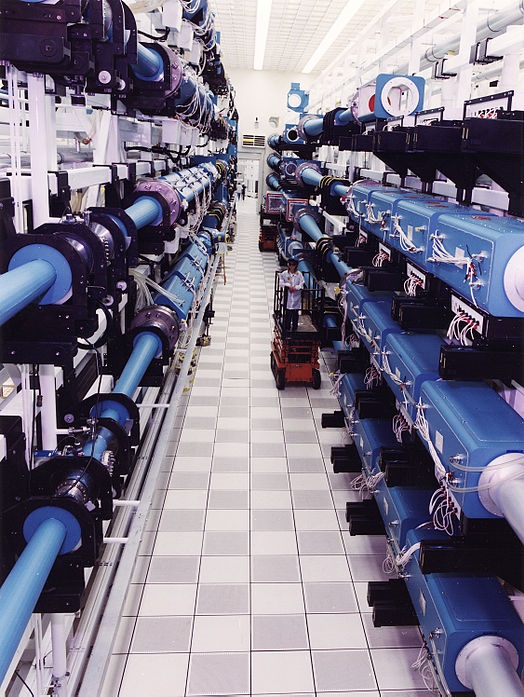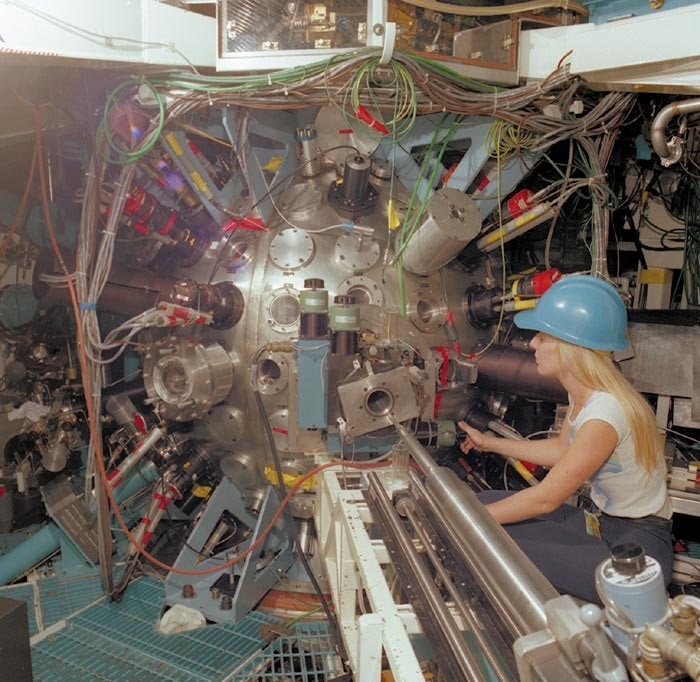
Blog
-
Geiger Readings for January 12, 2013
Ambient office = 87 nanosieverts per hourAmbient outside = 155 nanosieverts per hourSoil exposed to rain water = 178 nanosieverts per hourHass avacado from Top Foods = 91 nanosieverts per hourTap water = 106 nanosieverts per hourFiltered water = 89 nanosieverts per hour -
Radiation News Roundup January 11, 2013
More than a decade and a half after the Cold War ended, the world’s combined stockpile of nuclear warheads remain at unacceptably high levels. ploughshares.org
A freezing valve resulted in a water spill on the grounds of Entergy’s River Bend nuclear plant Tuesday, but it did not pose a risk to public health. nuclearstreet.com
-
Geiger Readings for January 11, 2013
Ambient office = 118 nanosieverts per hourAmbient outside = 110 nanosieverts per hourSoil exposed to rain water = 113 nanosieverts per hourRedleaf lettuce from Top Foods = 110 nanosieverts per hourTap water = 78 nanosieverts per hourFiltered water = 65 nanosieverts per hourAlaskan Copper River Salmon = 88 nanosieverts per hour -
Nuclear Fusion 7 – History 5
In 1979, the U.S. Los Alamos National Laboratory demonstrated the radio frequency quadrupole accelerator (RFQ). The RFQ is a linear accelerator with low beam energies between fifty thousand electron volts and three million electron volts which accelerates and focuses a stream of charged particles. The U.S. Argonne National Laboratory and Hughes Research Laboratories demonstrate an ion source utilizing a xenon beam at one and one half million electron volts. A report to the U.S. DOE concluded that Heavy Ion Fusion (HIF) was the best path to commercial fusion power reactors. The Director of the DOE Department decides to invest more effort and resources in HIF.
In 1982, German and U.S. researchers work on a Conceptual Heavy Ion Beam Driven Fusion Reactor (HIBALL) design. The design includes four chambers served by a single radio frequency accelerator and liquid lithium inside the walls of the chambers. The French begin construction of a tokamak design they call “Tore Supra.” The name is derived from torus and superconducting. Their design is the first tokamak that utilizes superconducting magnets to generate a powerful permanent poloidal field.
In 1983, the Joint European Torus is completed in the U.K. after almost ten years of work and first plasma tests are conducted. At the Lawrence Livermore National Laboratory, the NOVETTE laser begin operating. It is used to test design concepts for the next generation of Inertial Confinement Fusion lasers. NOVETTE is a two beam neodymium laser that was constructed from parts of the Shiva and Argus lasers.
In 1984, Lawrence Livermore National Laboratory finishes construction of the big ten beam NOVA laser utilizing information from the NOVETTE laser. NOVA was the first inertial confinement fusion experiment which was intended to reach “ignition.” Ignition is a nuclear fusion chain reaction that releases a large amount of energy. NOVA failed to reach ignition but its failure highlighted the problem of magnetohydrodynamic instability in the plasma. NOVA laid the groundwork for future fusion reactor designs.
In 1985, the U.S. National Academy of Sciences surveyed all the U.S. military research programs for inertial confinement fusion. The survey mentioned that Heavy Ion Fusion (HIF) did have a lot of advantages. There was concern that the military program were heavily reliant on civilian research programs. The survey conclusion was that the primary purpose of HIF research should be for commercial power generation. In the same year, Japan completed their Japan Torus-60 (JT-60) tokamak and conducted plasma experiments. This reactor is still in use today and has produced important findings for fusion research.
In 1988, the Soviets completed their T-15 tokamak which included helium cooled superconducting coils for generating the magnetic fields. The Conceptual Design Activity for the International Thermonuclear Experimental Reactor (ITER) project began in 1988. It would follow and build on the knowledge gained by the T-15, TFTR, JET and JT-60 tokamaks. Euratom, Japan, the U.S.S.R. and the U.S. were all participants in the project which concluded in 1990.
Laser bay of the NOVA laser at Lawrence Livermore National Laboratory:
-
Radiation News Roundup January 10, 2013
Fukishima fall-out fears increase as DOUBLE the normal amount of radiation is found in Missouri snow and San Francisco beach busts radiation safety levels. dailymail.co.uk
The Japanese Nuclear Regulatory Agency demanded that TEPCO drop test waste canisters to be used to hold highly radioactive sludge from the Advanced Liquid Processing System being used to decontaminate water at Fukushima. fukuleaks.org
Early nuclear safety posters are perky and disturbing. io0.com
The Lungmen nuclear power plant could be in operation by the end of this year or early next year, according to reported statements from Taiwanese planners. world-nuclear-news.org
-
Geiger Readings for January 10, 2013
Ambient office = 72 nanosieverts per hourAmbient outside = 94 nanosieverts per hourSoil exposed to rain water = 82 nanosieverts per hourRedleaf lettuce from Top Foods = 97 nanosieverts per hourTap water = 122 nanosieverts per hourFiltered water = 109 nanosieverts per hour -
Nuclear Fusion 6 – History 4
In 1974, some confusing results from the British ZETA research device from 1958 were re-examined and it was concluded that something interesting was revealed. What emerged from the new look at the ZETA results was something called a reverse zeta pinch (rzp) effect. In this type of magnetic confinement, the toroidal magnetic field and the poloidal field are equal strength while in a tokamak the toroidal field is much stronger. The rzp has requires much less energy to confine the plasma. The direction of the radial toroidal magnetic field reverses moving out from the center which is where the “reverse” part of the name comes from. One of the problems with this configuration is that it is more susceptible than a tokomak to turbulence and non-linear chaotic effects. While this would make practical fusion production difficult if not impossible, it is useful in modeling some astrophysical plasma processes. These ideas have come to be knows as self-organizing plasmas.
In 1974, construction is completed at Lawrence Livermore National Laboratory (LLNL) on the two beam “Janus laser”. New inertial confinement experiments are carried out following the end of construction. Also in 1974, the first successful laser-induced fusion in a deuterium-tritium was carried out by a private company named KMS Fusion.
In 1975, researchers decide that heavy ion beams generated by high energy accelerators could be the route to commercial fusion reactors. A mathematical model of energy required to achieve a particular nuclear event called the Livingston Curve is extended to show the amount of energy that sustained nuclear fusion will require. Inertial confinement experiments with the new Cyclops laser are carried out at the LLNL. This new laser was designed to study nonlinear focusing, novel amplification techniques and spatial filtering with the goal of assisting in the design of practical fusion reactors.
In 1976, the U.S. Energy Research and Development Administration (ERDA)held an informal two week workshop on inertial confinement with fifty senior energy research scientist in attendance. Dr. C Martin Stickley, director of the ERDA Office of Inertial Fusion, announced that the conclusion of the experts at the workshop was that there was no theoretical barrier to the realization of controlled and sustained nuclear fusion. The two beam Argus laser is completed and used for fusion experiments at LLNL. The Argus laser was used to study laser-target interaction. Powerful laser beams can modify the optical characteristics of the materials they pass through interfering with beam focus and potentially damaging the materials. Experiment with the Argus laser employed successive stages of amplification and spatial filtering to improve beam coherence.
In 1977, the twenty beam Shiva laser is finished at LLNL. This laser is able to deliver ten thousand joules of energy to the target. The Shiva is the first of what are referred to as “megalasers.” The laser installation approached the size of a football field. Also, in England, the Joint European Torus design is finished and approved. A site is chosen for construction.
Shiva laser target chamber:
-
Radiation News Roundup January 9, 2013
Will everyone in North America get cancer? activistpost.com
Who profits from a cover-up at Fukushima? fromthetrenchesworldreport.com
-
Geiger Readings for January 9, 2013
Ambient office = 91 nanosieverts per hourAmbient outside = 43 nanosieverts per hourSoil exposed to rain water = 47 nanosieverts per hourVine ripened tomato from Top Foods = 75 nanosieverts per hourTap water = 101 nanosieverts per hourFiltered water = 80 nanosieverts per hour





